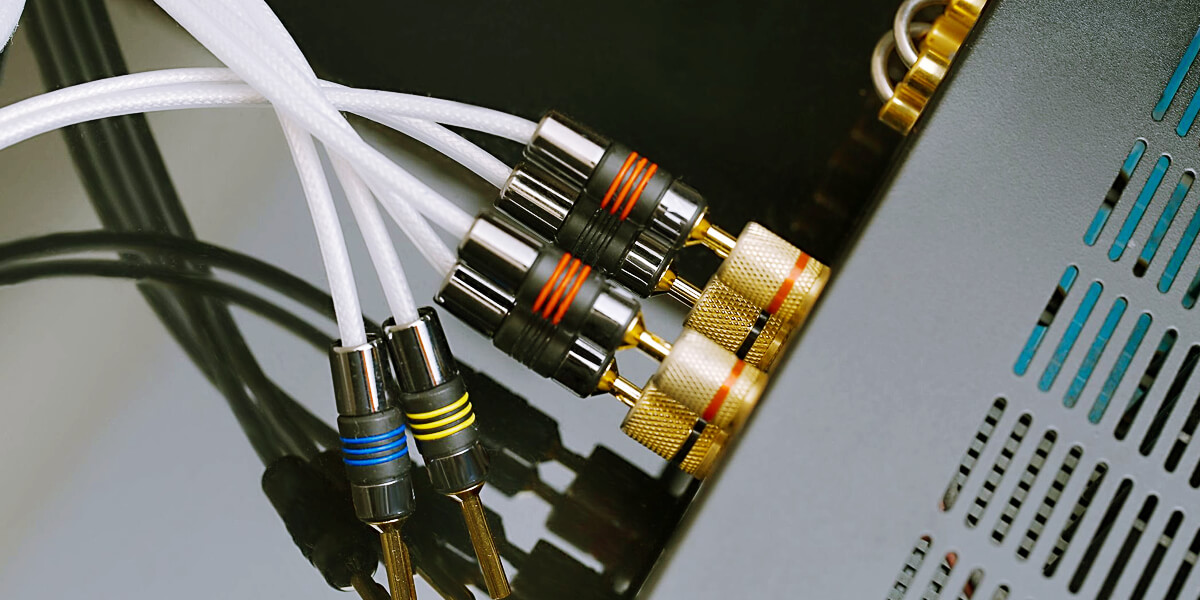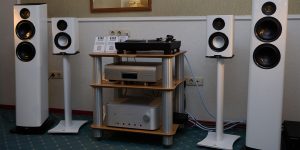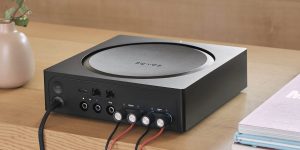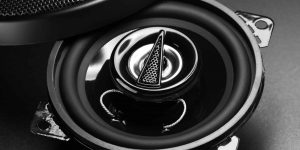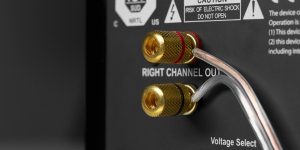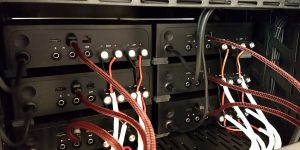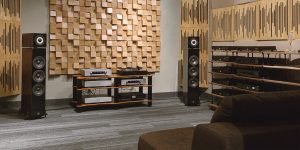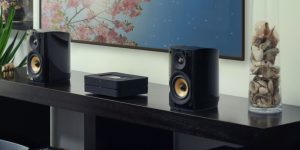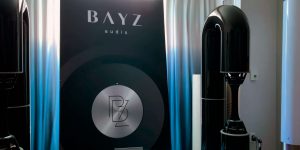Don’t know how to connect a speaker wire to your audio system? Then our guide is definitely what you need. It is not the most exciting procedure to connect speaker wire, but setting up an audio system is necessary. It may seem too complicated to some, but everything will become much easier if you understand the nuances.
Today, we will take a closer look at the various possible connection types and show step-by-step instructions for connecting.
What you need to know about speaker wire
Each speaker in your audio system requires its own electrical signal. Connecting speaker wires provide this signal to the amp or receiver, so you need a separate wire for each one. For example, for a 5.1 system, you will need 6 wires, and a 7.1 system will require 8.
For all speakers, except for the subwoofer, as a rule, two-wire stereo cables are necessary, consisting of 2 copper wires. A mono stereo cable will work for the subwoofer. All types of cables have a synthetic coating so that only their ends are visible.
Any wire has a positive and a negative part at its ends. Incorrect connection of these sides will negatively affect the performance of your system, so it is always worth checking it before turning it on for the first time.
If the markings on the equipment itself always indicate pretty clearly which side to connect, then there are often problems with the wires themselves. The simplest solution is to wire with a two-color scheme, but if it is not there, you need to know other ways to determine where + and where – is.
One stripe or dotted line at the end of the wire indicates the positive side. You can see tips in the form of printed signs or text on the end of the wire. In addition, there is a way to mark the wire yourself: test it with ordinary batteries and then stick colored tapes to the necessary sides.
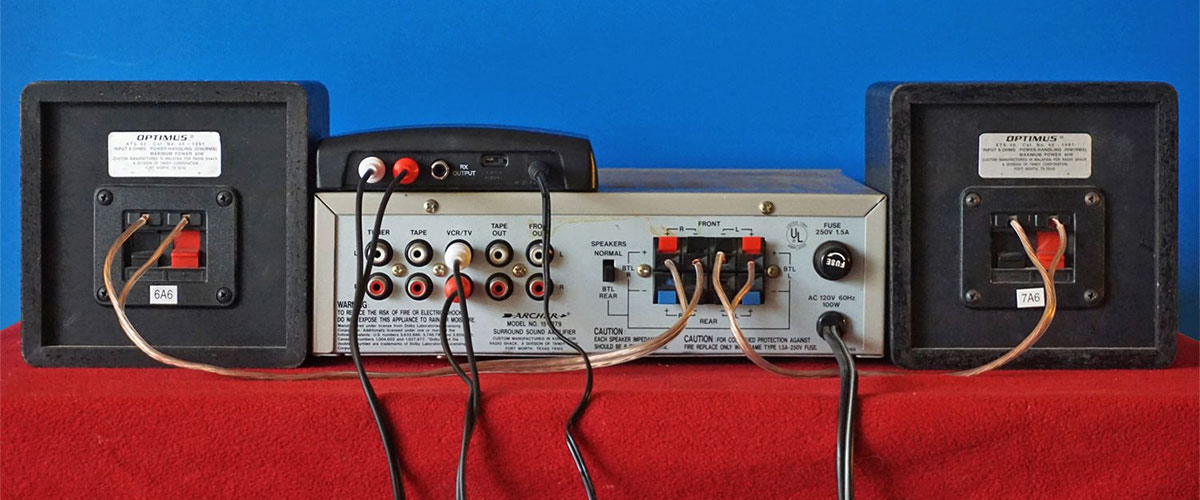
How to connect speakers with speaker wire
For connecting speaker to an amp, you need to take the following steps:
- Place the amp and speakers in their designated locations. Be sure to have access to the connection panels.
- The wires should not interfere with your daily life. There are many ways to secure and hide cables. For example, you can use duct tape or hide them behind moldings along the wall.
- Match the speaker cables to the correct outputs on the amp. It is not very challenging in practice, as the connections are indicated on the device. Connect the speakers on the right side to the appropriately labeled outputs on the receiver. The same situation is with the left side.
- In addition, check the correct connection of the poles. Be sure to connect the end of the cable both to the positive pole of the speaker and to the positive pole of the receiver either. With negative poles, you need to do the same, respectively. The color scheme and wire marking ought to help you with this.
- Open the mounts on the receiver to have a gap where the stripped end of the cable can fit.
- Carefully insert the cable’s end into the connector on the receiver and then close it.
What happens if I connect the speaker wires incorrectly
There are several ways to connect speaker wire to receiver incorrectly, and we will analyze each of them in more detail below.
Connect the left speaker to the terminals marked on the right on the receiver
This type of misconnection will occur if you plug the right side speakers into the jacks marked for the left side and vice versa – the left side speakers into the correct side jacks.
What will happen in such a case? Actually, it’s nothing to worry about.
Sound intended to exit from one side will exit from the opposite side. Often you won’t even notice it. Of course, to fully appreciate the work of the sound engineer who worked on what you are listening to, it is worth connecting the speakers correctly. But a wrong connection will definitely not ruin your equipment or harm your ears.
Connect the positive to the negative terminals
If you reverse the poles and connect the negative output of the amplifier to the positive input on the same speaker, then nothing wrong will happen either. It will work as it should. If you connect reverse poles for 2 speakers, in the same way, the situation will be similar.
Problems will start if you connect 2 speakers in different ways. This is called to connect speakers out of phase.
In this case, you also should not worry about the safety of the equipment, but the sound quality will not suit you. The fact is that the diaphragms of these speakers will move in different directions. This will create an effect where the low-frequency waves mute each other.
To tell the truth, the sound will not please you as it will be rather strange.

Types of speaker wire connections
Standard connectors for speakers, receivers, and amplifiers exist in two types: spring clip or binding post.
For ease of hooking up speaker wires, they are usually marked with colors. For example, red most often means a positive terminal, while black means a negative one. There are also bi-wired devices where both inputs are paired.
Let’s take a closer look at each of these types.
Spring clips
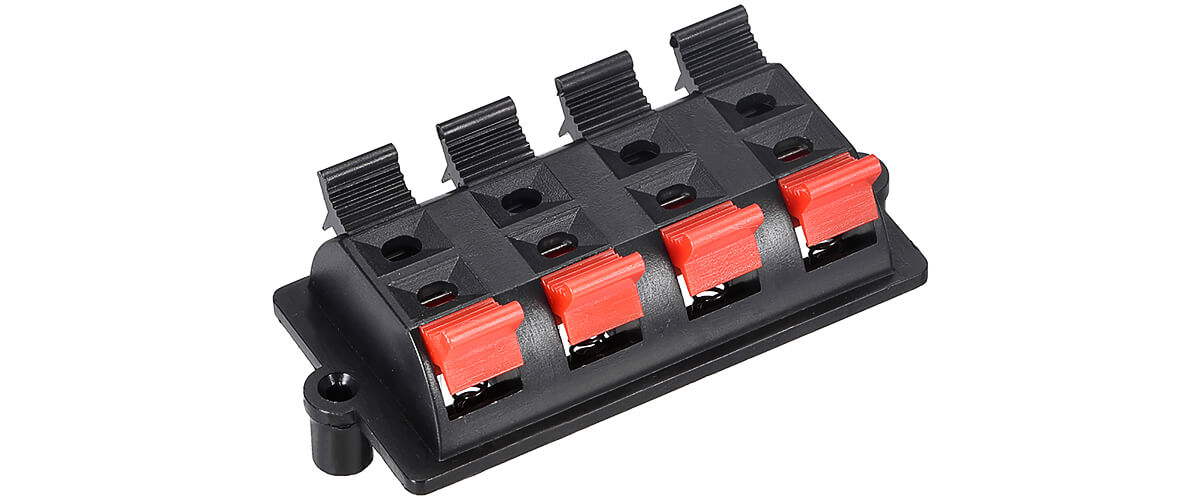
Such a terminal is common for almost any equipment, but you will often see it in budget options or all-in-one equipment.
This connection is popular for maximum ease of use. All you have to do is open the connector by pressing on the bottom of the spring clip. Next, insert the wire into the slot that appeared above the button you pressed. That’s the whole procedure.
Both bare wire or pin connectors will suit this terminal.
Binding posts
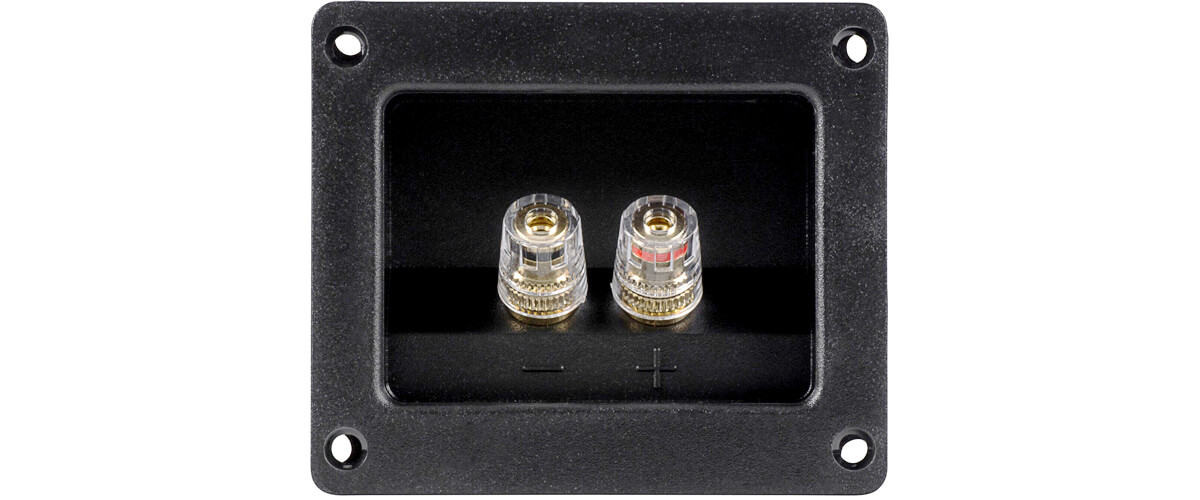
This connection is one of the most popular. It can be seen both on low-cost models and the most high-end devices.
To hook up the wire to such a connector, start with unscrewing the plug on it. Next, insert the stripped wire into the spot. If you use a spade connector, put it around the post. Your next step is to screw the plug back.
There is another way of connection – with the help of banana plugs. Attach them to the ends of the cables and then insert them into the desired connectors. Banana plugs are more widespread on receivers, but you will not often see them on speakers.
RCA
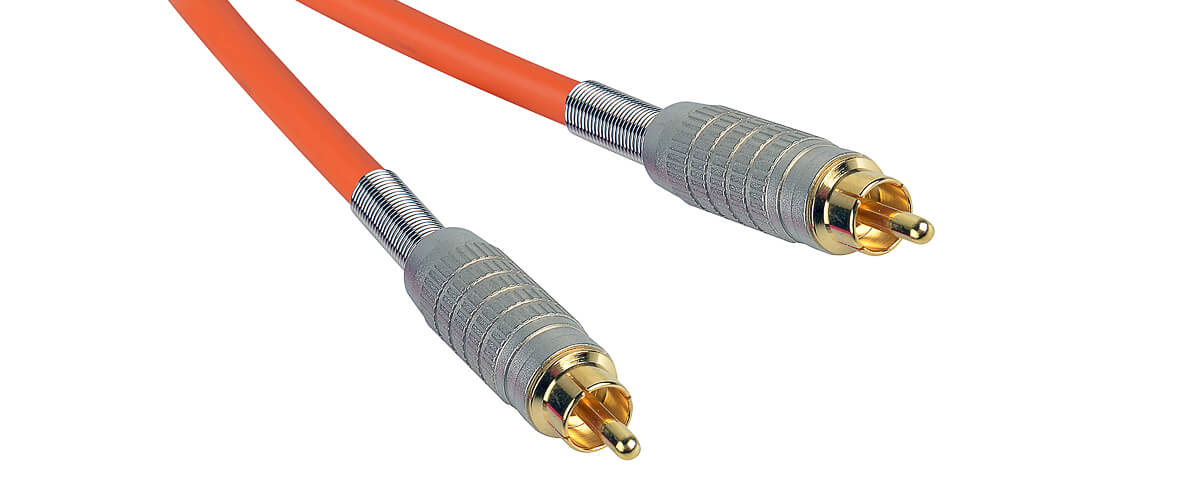
RCA audio cables are common types of speaker connections, especially in consumer electronics and home audio systems. They are known for their ease of use and affordability, making them a popular choice for receiver-speaker connections. However, they are also often found among true audiophiles who use this type of cable to connect vinyl turntables, and they are also called phono plugs or aux cords.
An RCA cable is an unbalanced, usually very short cable. It usually has two connectors, one for the left audio channel (white or black connector), one for the right audio channel (red), and a third connector (if available) for the ground.
Learn more about the types of audio cables in our article.
XLR
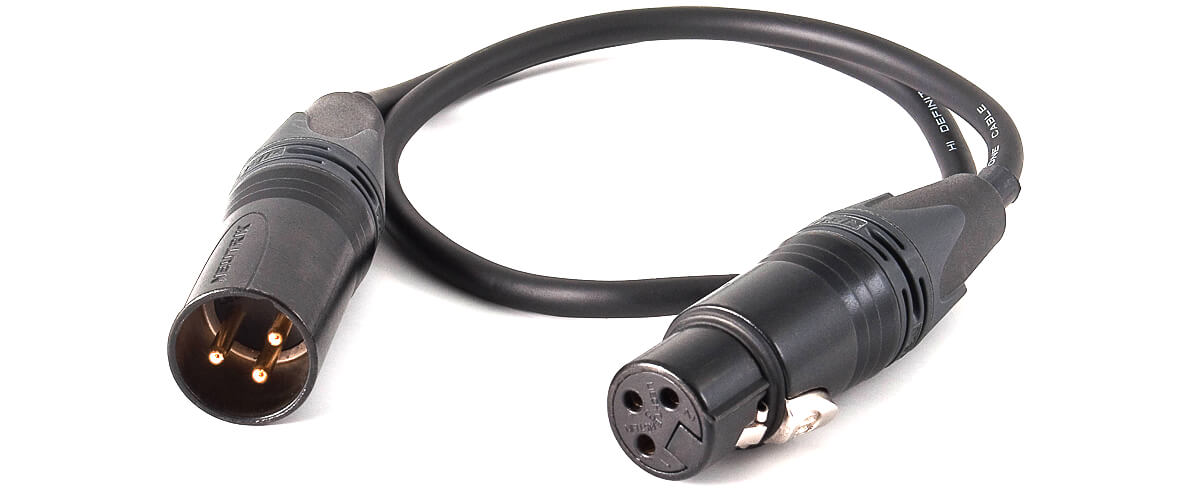
XLR, or microphone cables, are popular audio cables commonly used to connect wires to speakers, especially in professional audio systems. They are used for mixers, preamps, microphones, and even stage lights, making them often 6-50 feet long, and have interlocks to prevent the wire from being accidentally ripped out during a performance. Their features include durability and the ability to resist wear and tear, making them a reliable option for connecting speakers in various environments.
XLR cables are wires with balanced audio signal transmission, which helps reduce noise and interference and provides high-quality, clear, and reliable audio signal transmission. However, when wiring speakers using XLR cables, it is important to remember that they have three pins, which means they are incompatible with other types of connectors.
Speaker wire connector types
Using a connector at the end of a wire is called terminating. There are several types of connectors, and the choice of a particular one depends on the type of terminals on your equipment.
There is also the most straightforward option, which does not require a connector at all. It is a connection with a bare wire acceptable for all devices.
Use a sharp knife or special equipment to cut off the insulation at the end of your wires for such a method. Usually, it is enough to remove half an inch. Next, you need to twist the copper strands of the bare wire together. There should not be any loose strands left. Then, insert the prepared end of the wire into the desired terminal and make sure it is securely fastened.
Well, now let’s talk about the features of each type of connector.
Pin connectors
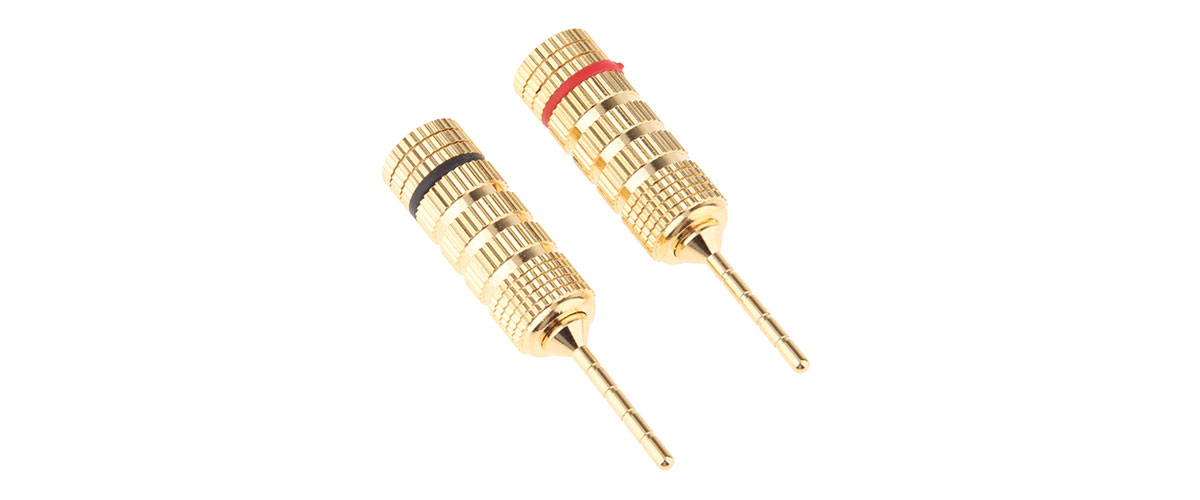
This is a more reliable type of connection establishment.
Pins are usually about 2mm in diameter. You can fix them to a bare wire with pre-cut insulation. Crimping, soldering, or screw-in connections are the most widespread methods of fastening the pin to the cable.
Typically, this connection is suitable for spring clips. Your next step is to press the clip and push the connector into the hole. However, with binding posts, this connector is used pretty rarely.
Banana plugs
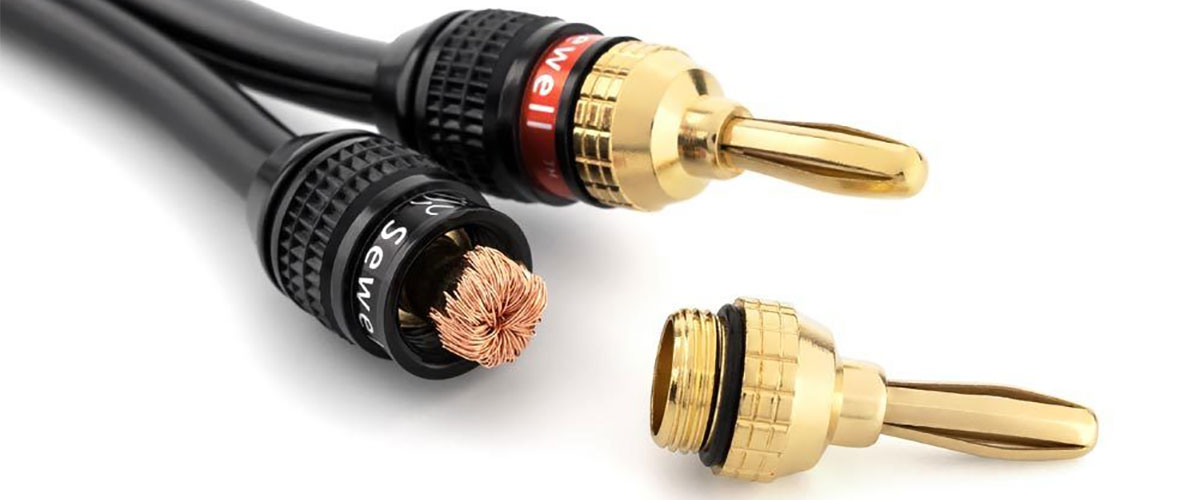
This is probably the most popular type of connector that most people use for home systems – it’s pretty simple and effective.
4 of these connectors are necessary for each wire – 2 for each end. They are attached to the cable using threaded connections, by soldering, and sometimes are also self-crimping.
The standard diameter of such connectors is 4 mm. This allows you to use them with maximum convenience for binding post connection.
Spade connectors

Another popular type of connector is spades. In the methods of securing the connector to the wire, as well as the required amount for each wire, it is identical to banana plugs.
This connector provides a tight and secure connection and is especially effective when the speakers stand close to the wall. In this case, you may not have enough space for another connector, but you can use spade connectors with different angles.
For fastening, you just need to unscrew the blinding post cover, place the spades and screw the cover back on.
Why do I need to use speaker wire connectors
Using wire connectors has some advantages over the bare wire.
Firstly, they save you from the headache when checking the correct connection. Receivers are usually color-coded for connection, which can not be true for all the wires. Using connectors will help you forget about this problem because the connectors themselves are color-coded. This is especially important for owners of multi-channel systems.
The following important point is that connectors simplify the connection process itself. When using bare wires, you need to properly strip and twist them so that no copper ends stick out. As a result, you may tangle the wire or damage it. With a connector, you can avoid such problems. This is especially important if you often need to disconnect and reconnect equipment.
Also, the use of connectors can improve the sound quality because it provides a more reliable connection to the audio system’s components. In this case, the speakers will always receive a pure quality signal and reproduce it accordingly.
Well, the last point is the neat appearance of your system. The rear side of the devices is rarely seen, but you will be pleased to know that everything is in order there.
Common problems with speaker connections
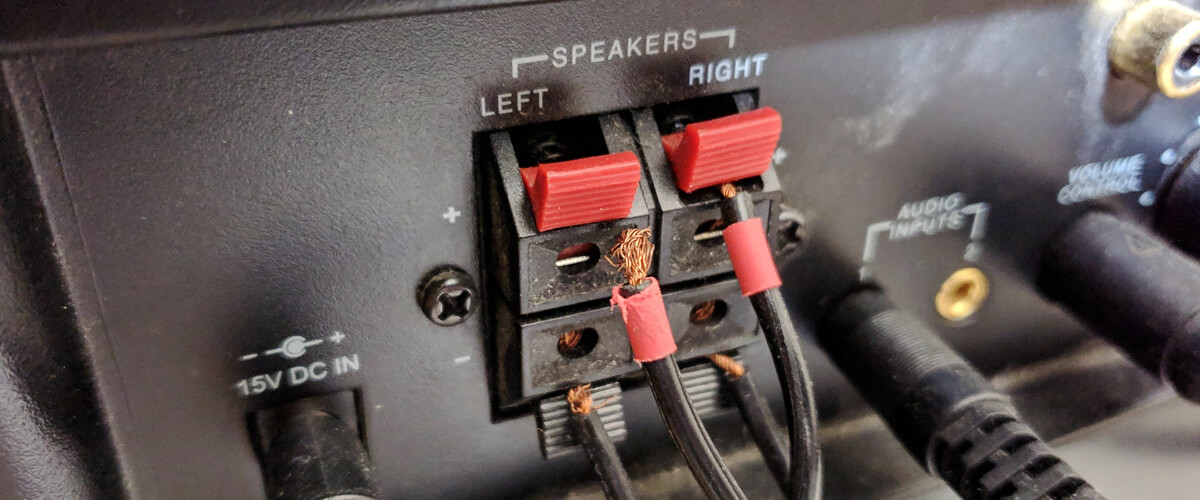
Speaker connections are crucial for the proper functioning of any audio system, but they can be prone to various problems that can compromise sound quality or even damage the equipment. Here are some common problems that can occur with speaker connections:
Loose or disconnected wires: If the wires connecting the amplifier or receiver to the speakers are not tightly connected, the audio signal can be weak, distorted, or nonexistent.
Ground loop hum: This is a low-frequency hum or buzzing sound resulting from a voltage difference between two pieces of audio equipment connected to each other, creating an unwanted circuit.
Speaker impedance mismatch: The impedance of the speakers should match the amplifier or receiver’s output impedance. If they don’t, the audio signal can be distorted or even damage the speakers.
Overheating equipment: Amplifiers or receivers can get overheated if they are overworked or not adequately ventilated, which can cause signal distortion or even device failure.
Electrical interference: If other devices that produce electromagnetic signals (such as phones or routers) are near the audio equipment, they can create unwanted noise in the audio signal.
Improper cable use: Using too long, low quality, or not designed for audio equipment cables can negatively impact the audio signal quality.
Audio latency: This refers to a delay between the audio signal and when it reaches the speakers, causing synchronization problems and an overall poor audio experience.
To prevent these issues, it’s important to use quality equipment and cables, ensure the connections are tight and secure, and keep other electronic devices away from the audio system. Regular maintenance and cleaning can also help avoid these common problems with speaker connections.
FAQ
Can you put 2 speaker wires in one slot?
First, remove a small section of insulation from the end of each wire to connect the speaker wires to the spring clips or the binding post. Then insert the bare wire into the appropriate spring clip on the back of the speaker or amplifier, ensuring the wire is secured. Repeat the process for the other wire. The wires can also be soldered together.
Can I mix and match different connectors on my speakers and amplifier?
Do different types of speaker wire connectors affect sound quality?
How do I know if my amplifier and speakers are properly matched for power?
This information may be found in the specifications provided by the amplifier manufacturer and speakers or on their official websites. Keep in mind that improperly sized equipment may result in unwanted damage.

